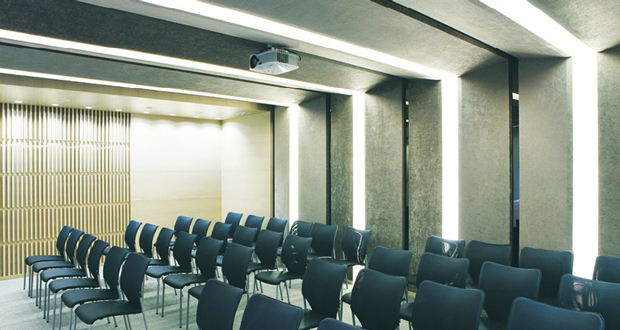Micaela Abbott, Sales Director at Megaman looks at the existing and upcoming bans on the manufacture and sale of fluorescent lamps and describes some of the recommended alternatives
The Restriction of Hazardous Substances Directive (RoHS) first came into force in the EU in 2003. It aimed to end the use of hazardous chemicals in all electrical and electronic equipment (EEE). Following an amendment in 2021, this was extended to fluorescent lamps, which contain potentially harmful levels of mercury. However, considering the efficiency benefits offered by LED alternatives, the legislation enabled an industry-wide shift towards more sustainable options consistent with national and international climate policy.
As such, and despite the UK leaving the EU in 2016, fluorescent lamps have been phased out in stages in accordance with the Directive. The goal is that by 2030, 85 per cent of lamps will be LED. Only specialist lamps, such as those for medical and scientific purposes, that currently have no viable LED alternative are exempt from the ban.
THE LEGISLATION SO FAR
At the time of publication, the ban includes T5 and T9 circline fluorescent lamps, compact fluorescent lamps with plug-in base (CFL) and halogen pins (G4, GY6.35, G9). Manufacturers of T5 and T8 tubes also had their exemptions from the RoHS revoked in February 2024, amounting to a ban on production for the UK market; however, lamps already manufactured can continue be sold and used.
T9 lamps are also due to be phased out in February 2025 with some high-pressure sodium (SHP) lamps and metal halide lamps surviving until 2027. However, these dates are likely to be revised as new LED products come onto the market, providing viable alternatives.
Although the industry has been moving towards efficient lighting solutions for many years, fluorescent lamps are often still bought in both the commercial and residential sectors because of the perceived convenience of replacing products like-for-like. However, as existing stock begins to dwindle, this strategy is likely to become increasingly costly for facilities managers.
Furthermore, because fluorescent lamps can last for several years, many buildings won’t require an immediate replacement. This is especially likely with T5 and T8 fluorescent lamps, which are still commonplace in many workplaces, schools or communal areas of residential buildings.
However, some LED tubes are now being manufactured that are compatible with both conventional magnetic ballast and mains input fixtures, without the need for rewiring. As a result, a fluorescent tube can be removed and an LED tube slotted straight in. What’s more, being proactive and swapping out fluorescents for LEDs sooner rather than later can have significant cost benefits.
BENEFITS OF SWITCHING
The primary advantage of LEDs over fluorescent lamps is the increased levels of efficiency they offer. Usually operating at 25 watts or less, switching to LEDs can provide instant and significant energy savings, particularly for large building with lots of fixtures. Fortunately for facilities managers looking to replace existing lamps, increased efficiency doesn’t mean a reduction in performance as LED tubes can deliver up to 185 lm/W, whereas a standard fluorescent lamp produces just 50 – 100 lm/W, guaranteeing an increase in light output as well as a decrease in energy input.
Efficiency can be enhanced further by incorporating a microwave sensor into any LED lighting set up, ensuring you aren’t wasting energy by lighting an empty room. Corridor function is also a useful energy saving feature of some microwave sensors, allowing a low level of light to be maintained in certain areas.
Although the initial up-front costs of LED tubes may be off putting to some, LED products provide a lifespan of approximately 75,000 hours compared to 15,000 for an equivalent fluorescent lamp. Consequently, considerable OPEX and long-term CAPEX saving can be made as a result. What’s more, the initial cost of purchase for LED lamps is likely to decrease as demand and production increases.
Finally, LED tubes are also significantly safer than fluorescent lamps. Fluorescent lamps pose a significant health hazard for two reasons. Firstly, they are prone to shattering as the bulb ages, which can create potentially dangerous shards of glass. The second hazard is the mercury contained within the bulb. A dangerous neurotoxin, mercury can cause a number of neurological conditions if it enters the body.
Conversely, LEDs are mercury free and can also be engineered to be shatterproof. Megaman, for example, uses a protective PET coating as standard on all its 2, 4 and 5ft T8 LED tubes. This prevents the glass from shattering on impact, ideal for communal, public or education environments.
Although many will be aware of the fluorescent lamp bans and the industry wide shift towards LEDs, it is important to stay on top of changing legislation and plan purchasing accordingly. As a result, facilities managers need to think ahead and ensure that they are optimising resources and choosing the best lamps possible. While fluorescents may once have been the most logical choice, the advantages of LEDs from a health, efficiency and financial perspective mean that there has never been a better time to switch on to their benefits.





